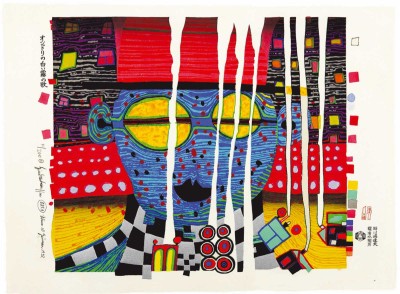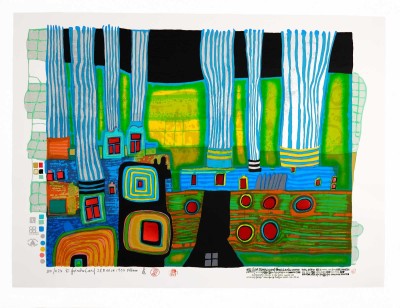Hundertwasser and Japanese Colour Woodcuts
22. June 2021

484A HOUSES IN RAIN OF BLOOD, 1961
"The first time I came in contact with Japanese woodcut-prints was in Italy when I was hitchhiking with friends and I saw rainfalls of Hiroshige as some peasants walked with umbrellas in the rain, and I saw Hokusai prints with the Fujiyama in the background and with clouds and with water and waves, and this all left such a deep impression on me that I decided later to do prints”, Hundertwasser told in 1976.
On invitation of Tokyo Gallery Hundertwasser lived in Tokyo from February until August 1961. It was extremely difficult to convince Japanese woodcarvers to work with an European artist, but in August he worked on the colour extracts of his first Japanese woodcut that was created after one of his works by the Japanese studio Adachi Kobo (484A Houses in rain of blood).
Furthermore, Hundertwasser noted: “I am very happy and very honoured that it was made possible for me, as I believe the first Western artist to be able to work together with Japanese woodcutters and printers.”
In the following decades more woodcut portfolios as well as single sheets were created.

885A WHITE FOG SONG OF A MANDARIN, 1991

938 SILENT STEAMERS, 1994
Walter Koschatzky explained: „The technique of ukiyo-e, as practiced by Utamaro, Hokusai, and Hiroshige, still survived in a few workshops faithful to traditional methods. Hundertwasser sought to employ his own art to infuse fresh vigor into the repetition of old motifs.“